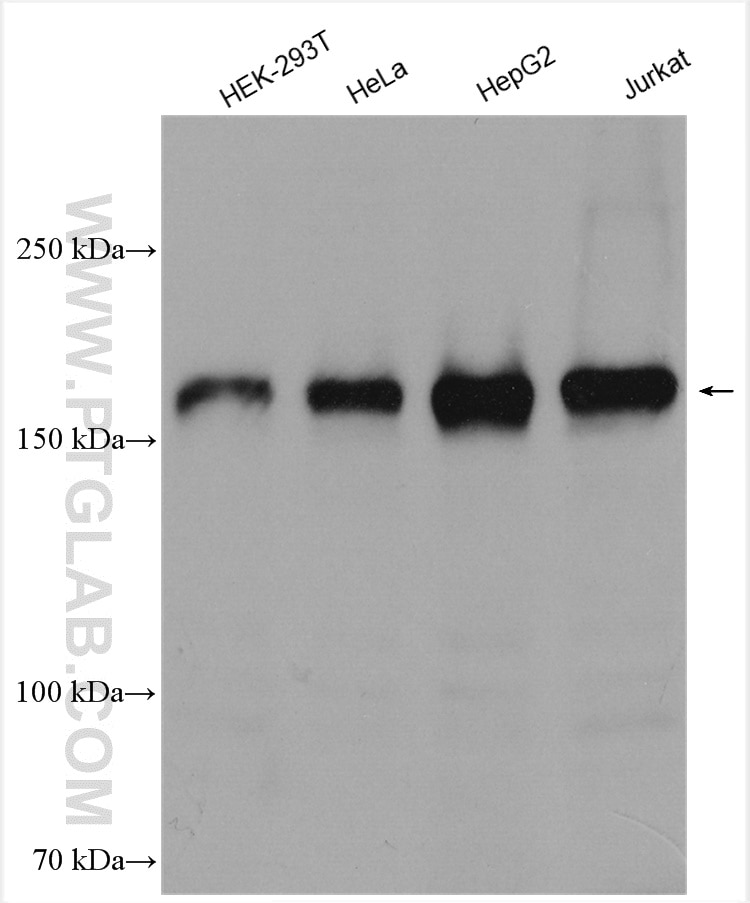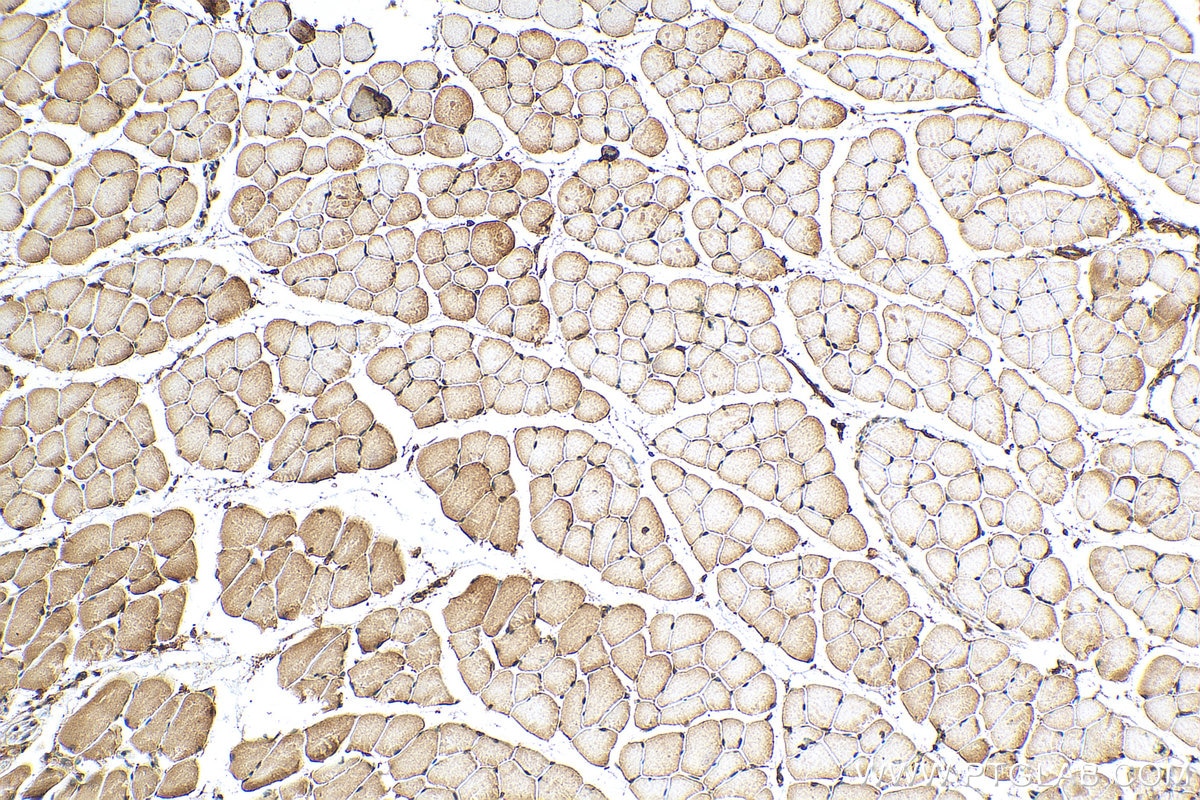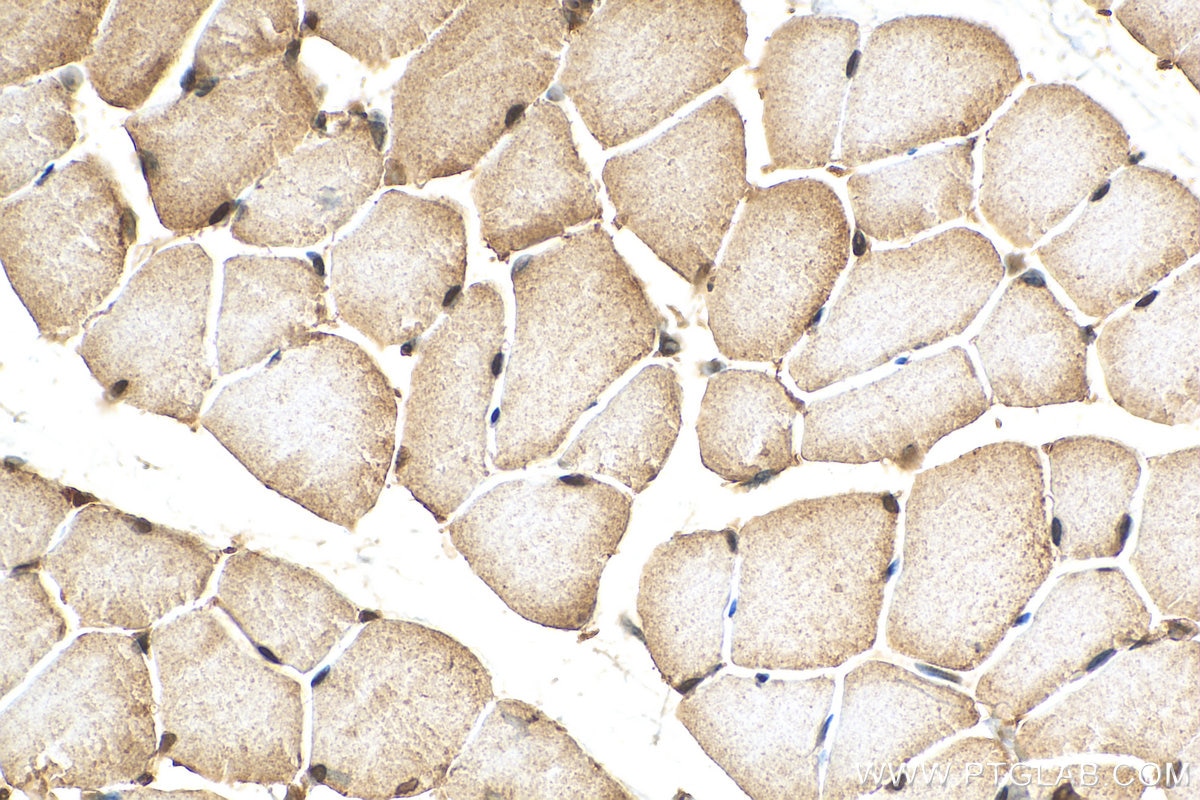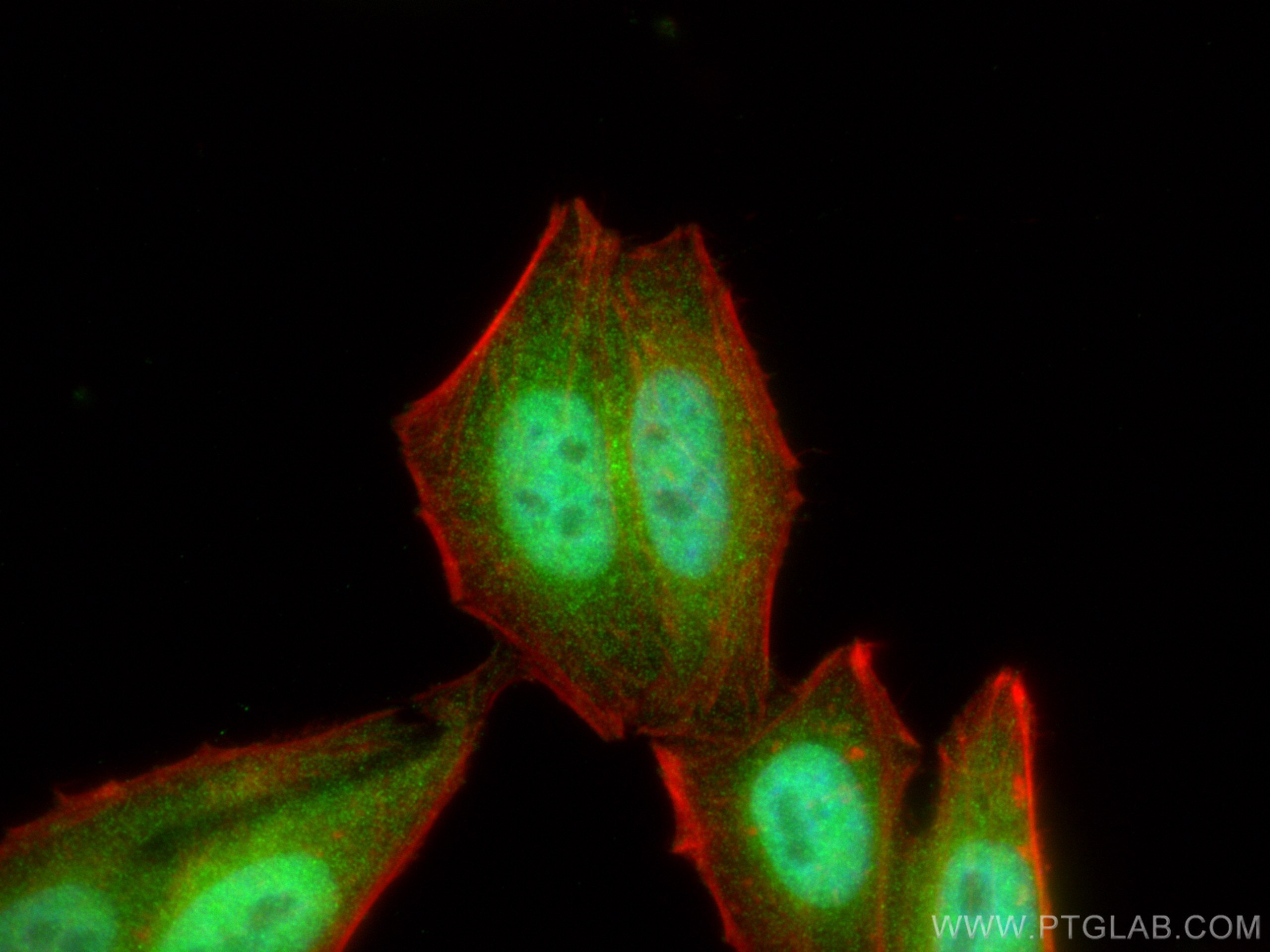Tested Applications
| Positive WB detected in | HEK-293T cells, HeLa cells, HepG2 cells, Jurkat cells |
| Positive IHC detected in | mouse skeletal muscle tissue Note: suggested antigen retrieval with TE buffer pH 9.0; (*) Alternatively, antigen retrieval may be performed with citrate buffer pH 6.0 |
| Positive IF/ICC detected in | HepG2 cells |
Recommended dilution
| Application | Dilution |
|---|---|
| Western Blot (WB) | WB : 1:500-1:2000 |
| Immunohistochemistry (IHC) | IHC : 1:50-1:500 |
| Immunofluorescence (IF)/ICC | IF/ICC : 1:200-1:800 |
| It is recommended that this reagent should be titrated in each testing system to obtain optimal results. | |
| Sample-dependent, Check data in validation data gallery. | |
Published Applications
| KD/KO | See 1 publications below |
| WB | See 9 publications below |
| IF | See 2 publications below |
| ChIP | See 2 publications below |
Product Information
16370-1-AP targets WAPL in WB, IHC, IF/ICC, ChIP, ELISA applications and shows reactivity with human, mouse samples.
| Tested Reactivity | human, mouse |
| Cited Reactivity | human, mouse, rat |
| Host / Isotype | Rabbit / IgG |
| Class | Polyclonal |
| Type | Antibody |
| Immunogen | WAPL fusion protein Ag9280 Predict reactive species |
| Full Name | wings apart-like homolog (Drosophila) |
| Calculated Molecular Weight | 142 kDa |
| Observed Molecular Weight | 160-180 kDa |
| GenBank Accession Number | BC017393 |
| Gene Symbol | WAPL |
| Gene ID (NCBI) | 23063 |
| RRID | AB_2216716 |
| Conjugate | Unconjugated |
| Form | Liquid |
| Purification Method | Antigen affinity purification |
| UNIPROT ID | Q7Z5K2 |
| Storage Buffer | PBS with 0.02% sodium azide and 50% glycerol , pH 7.3 |
| Storage Conditions | Store at -20°C. Stable for one year after shipment. Aliquoting is unnecessary for -20oC storage. 20ul sizes contain 0.1% BSA. |
Background Information
The wings apart-like (WAPL, or WAPAL) protein was originally identified as a gene product that potentially regulates heterochromatin organization in Drosophila melanogaster. Human WAPL is a cohesin-binding protein that promotes sister-chromatid resolution in mitotic prophase. Overexpression of WAPL disturbs mitosis and cytokinesis, and contributes to tumor progression by induction of chromosomal instability. WAPAL has a predicted molecular weight of 140 kDa, however, as a result of its extensive phosphorylation it separates on a SDS gel as a band of approximately 160-180 kDa.
Protocols
| Product Specific Protocols | |
|---|---|
| WB protocol for WAPL antibody 16370-1-AP | Download protocol |
| IHC protocol for WAPL antibody 16370-1-AP | Download protocol |
| IF protocol for WAPL antibody 16370-1-AP | Download protocol |
| Standard Protocols | |
|---|---|
| Click here to view our Standard Protocols |
Publications
| Species | Application | Title |
|---|---|---|
Nat Genet WAPL maintains a cohesin loading cycle to preserve cell-type-specific distal gene regulation.
| ||
Sci Adv RNA polymerase II is required for spatial chromatin reorganization following exit from mitosis. | ||
J Clin Invest Allogeneic T cell responses are regulated by a specific miRNA-mRNA network. | ||
Cell Rep Cohesin Removal along the Chromosome Arms during the First Meiotic Division Depends on a NEK1-PP1γ-WAPL Axis in the Mouse. |
Reviews
The reviews below have been submitted by verified Proteintech customers who received an incentive for providing their feedback.
FH Zhenmin (Verified Customer) (12-05-2019) | This antibody is very specific and works very well with immunohistochemical staining for formalin fixed and paraffin embedded tissue.
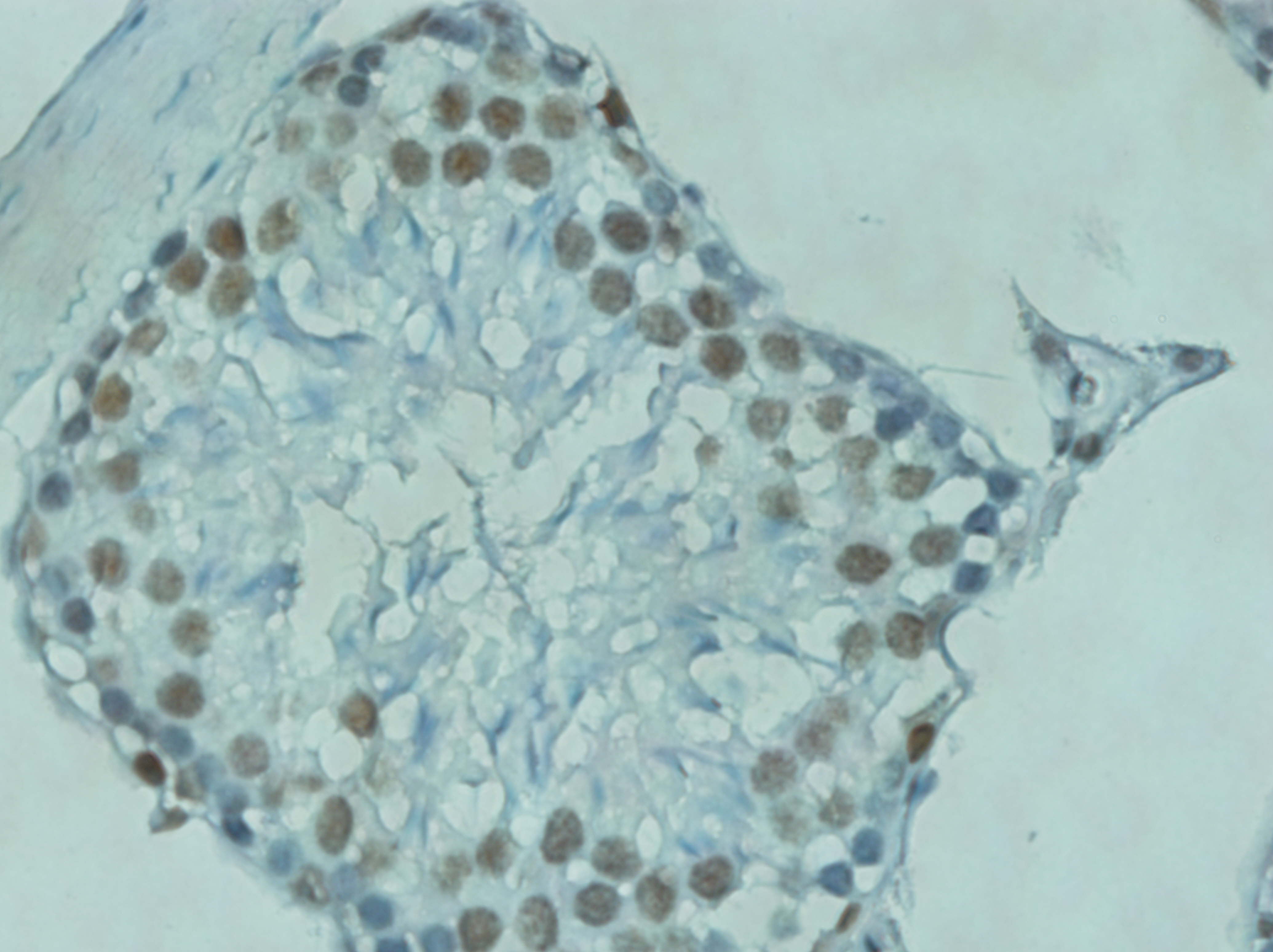 |
